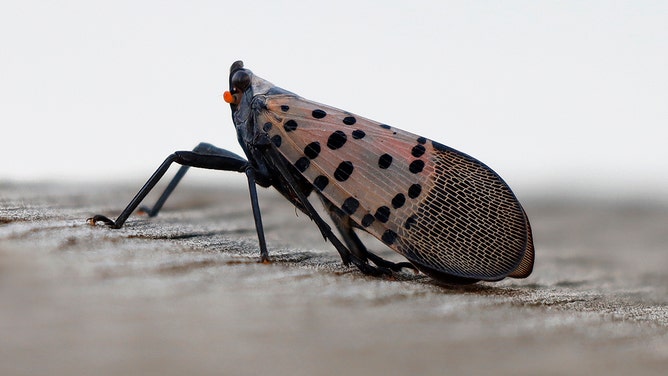California vineyards on alert after hitchhiking pest spotted in state for first time
Spotted lanternfly egg masses were found on a shipment from New York heading to Sonoma County this spring. "These invasive insects feed on the sap of grapevines, while also leaving behind a sticky honeydew residue on the clusters and leaves," California Association of Winegrape Growers President Natalie Collins said. "Their activities stress the plants, decrease vine health, and in some cases, can lead to plant death."
FILE – People told to squash lanternflies as they threaten vineyards
An invasive bug is spreading in states up and down the Northeast, and causing problems for vineyards. Now people are being told to squash these spotted lanternflies as soon as they see them.
SACRAMENTO, Calif. – Eggs from an invasive planthopper, known for causing significant damage to local vegetation and potentially impacting the entire winegrape industry, were discovered in California for the first time.
Spotted lanternfly egg masses were found on a shipment from New York heading to Sonoma County, the California Association of Winegrape Growers (CAWG) said.
USDA AGAIN ASKS FOR HELP SQUASHING THESE INVASIVE BUGS

A spotted lanternfly walks along a ledge.
(Gary Hershorn)
Eggs of the hitchhiking pest were intercepted at the Truckee Border Protection Station on March 27 off a 30-foot-tall metal art installation.
An inspection found 11 viable egg masses on the artwork, officials said. After the California Department of Food and Agriculture confirmed the pest identification, the shipment was rejected and refused entry into California.
The shipment was returned to Nevada, where 30 egg masses were found during inspection. The artwork was then washed with hot water and detergent to mitigate the eggs. After returning to California, three more egg masses were found during reinspection.
CARS, TRUCKS, TRAINS AMONG THINGS TO BLAME FOR SPREAD OF CROP-DESTROYING LANTERNFLY, STUDY FINDS

A spotted lanternfly egg mass on a piece of wood.
(Tim Leedy/MediaNews Group/Reading Eagle / Getty Images)
‘Immediate action to take if discovered’
Winegrape growers have expressed their concerns regarding the current spotted lanternfly issue. They are particularly worried that if more undetected egg masses have arrived in California, they could hatch into adults in the next few weeks and reach their peak population in late summer or early fall.
"This is essentially a public service announcement to raise awareness of how to identify a spotted lanternfly and the immediate action to take if discovered," CAWG President Natalie Collins said.
The invasive spotted lanternfly, native to Asia, was first detected in southeastern Pennsylvania in 2014 and has since spread to 18 states. They now pose a significant threat to vineyards, according to Collins.
"These invasive insects feed on the sap of grapevines, while also leaving behind a sticky honeydew residue on the clusters and leaves," she said. "Their activities stress the plants, decrease vine health, and in some cases, can lead to plant death."
The UDSA’s Animal Plant Health Inspection Service, along with the California Department of Food and Agriculture, has now implemented preventative measures to mitigate the spread of spotted lanternflies.
9-YEAR-OLD SCIENTIST HONORED BY YALE FOR SPOTTED LANTERNFLY WORK

An adult spotted lanternfly.
(Andy Lavalley/Post-Tribune/Chicago Tribune/Tribune News Service / Getty Images)
Egg masses typically hatch by June and adults are usually visible from July through November. They can fly, but not long distances. The one-inch-long adults look different when they are flying compared to when they are at rest.
At rest, with their wings folded, they are a dull tan-gray color with black spots. During flight, the adult’s open wings reveal a bright red, black and white pattern.
